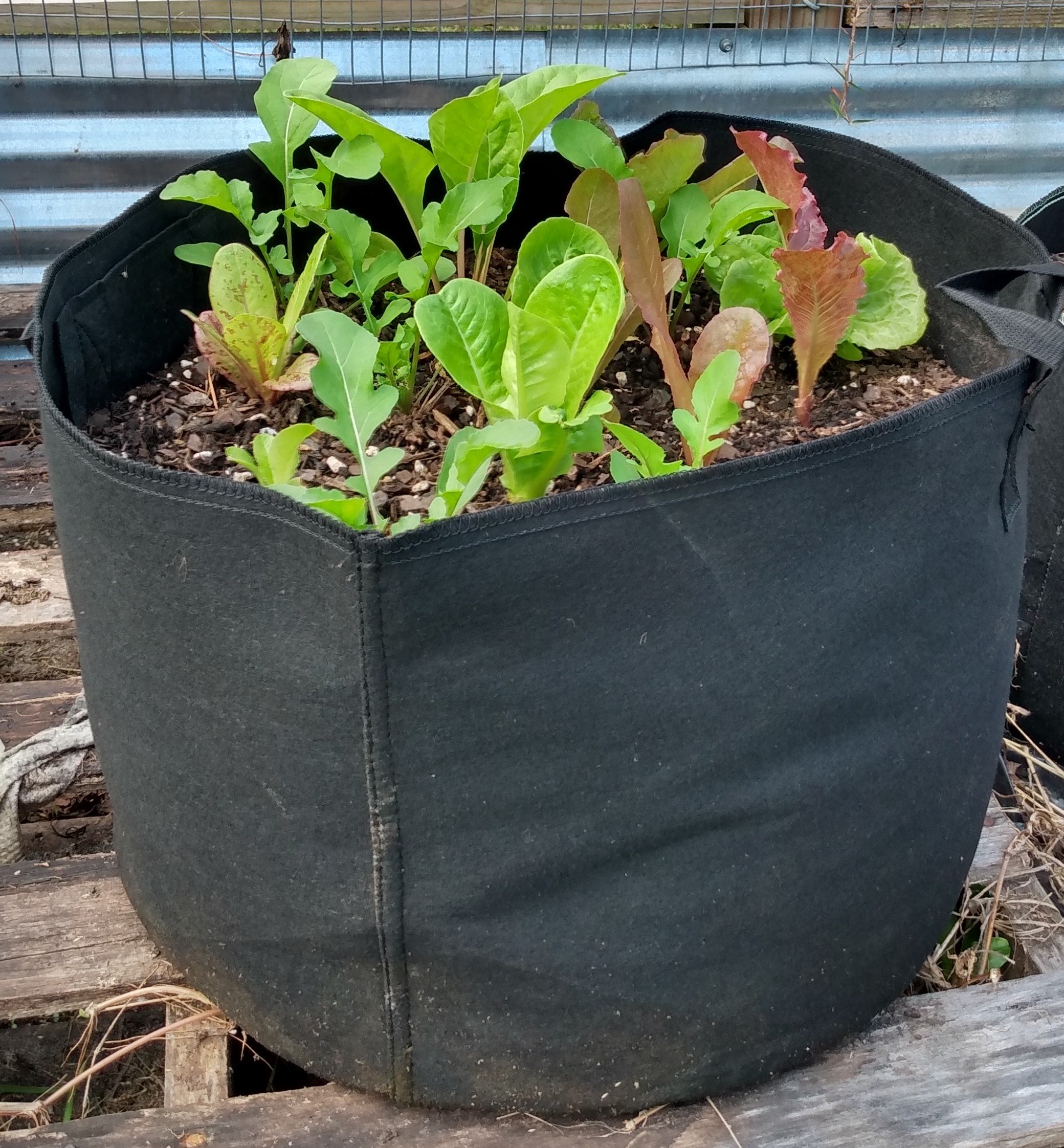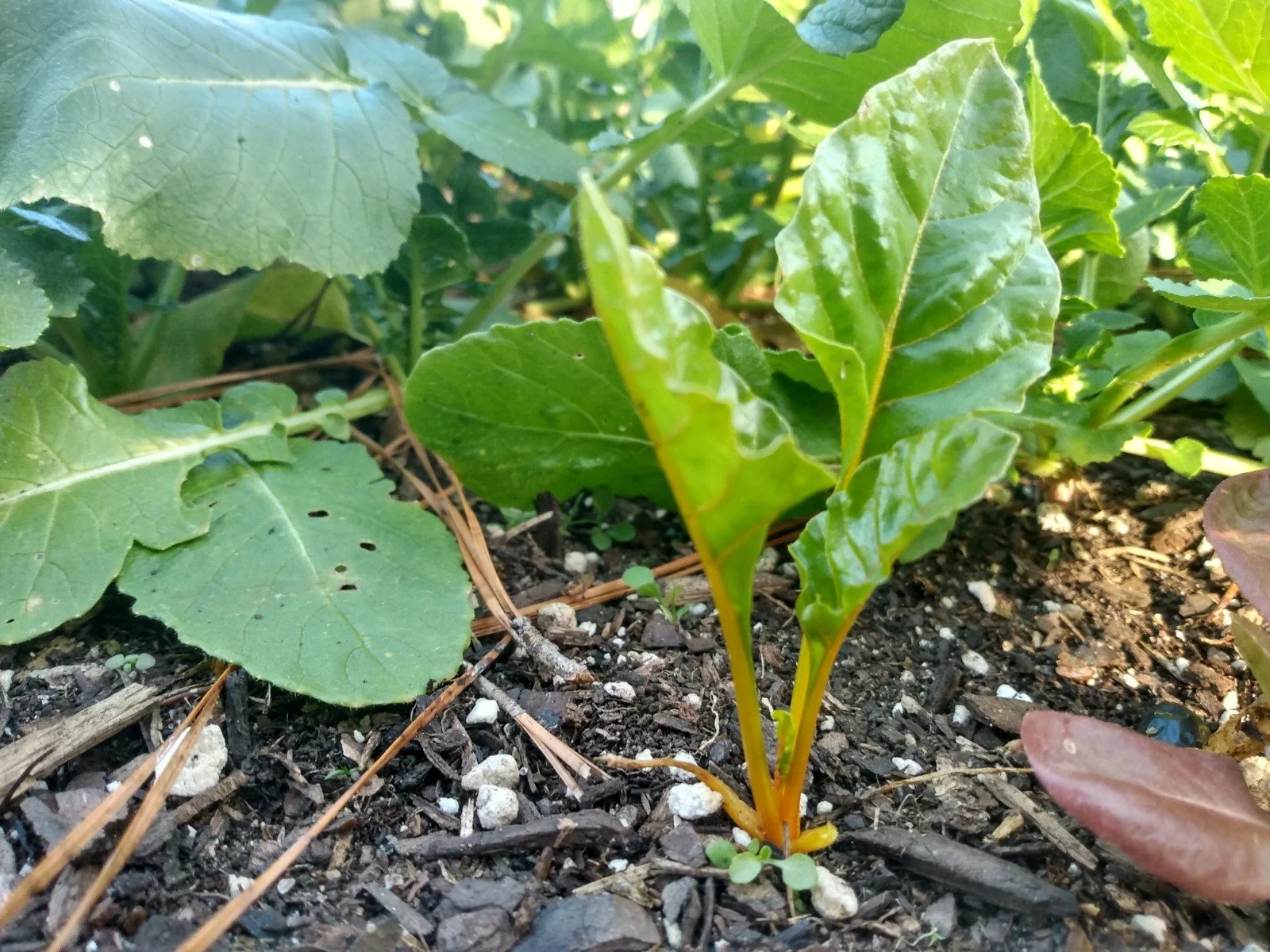Winter Grown Salad Greens
I had a salad for lunch today. It’s January 27th and I picked myself a salad for lunch from my outdoor, uncovered garden. It was delicious.
Last year, I made a New Year’s Resolution to become self-sufficient in lettuce. And I made it until June. I didn’t buy any lettuce from October-June last year, and this winter I haven’t bought any since September.
Here are a few tips for anyone who wants to stop buying lettuce and start growing their own here in the Wilmington, NC area
1. Choose hardy varieties. There are several places you can look for hardiness. You can search for “most cold hardy lettuce plants,” look on the back of seed packets, check the tags from the nursery if you’re buying plants, or you can read reviews on the website where you purchase your seeds. You can even ask in a local gardening forum for suggestions from experienced gardeners. It’s important to remember that although we lump all lettuce plants in together, every variety has it’s preferences, and if you get cold-hardy varieties you’ll have better success during the cold weather. In the same way, choosing varieties that are slower to bolt (make a flower) in hot weather are best for spring plantings.
2. Stagger planting dates for continual harvests. Thomas Jefferson suggested planting a thimbleful of lettuce seed every Monday from February 1st – September 1st every year. While I don’t need that much lettuce, I do try to plant some lettuce at least once a month, so I always have some ready to harvest, some getting close, and some just starting.
3. When you harvest your lettuce, it’s best to remove a few outside leaves from the lettuce plants, rather than cutting the whole head down. If you leave at least 3-4 tiny center leaves to grow, it will keep making leaves and you can get several harvests from each plant.
4. Liquid fertilizer can be applied in the winter, but use it half strength, or only once a month. Basically, the plants will be growing slower when it’s really chilly, and they don’t need quite as much fertilizer as they do during the summer months. You should apply a starter or all-purpose fertilizer as normal at planting time.
5. Plant close together, and thin them if they get too cozy. There is no reason, even in the winter, to have bare soil. If you want to just sprinkle some seed on your soil, water it well, and keep it from drying out for a few weeks, you can have a container of lettuce that will provide many servings over the winter. And when the plants get too close, cut down every other and leave the roots in the soil to break down and become nutrients for the plants that remain.
6. Don’t be surprised if you have some loss from cold weather. I like to keep some old blankets and bedsheets, or a frost cloth, to cover my plants when it gets below 30 degrees. I still think it’s worth the trouble to get that delicious salad all winter long!
7. Be aware that most salad greens are short-lived plants. They’re technically annuals because their natural lifespan is under a year. For some of them it’s just a few months. When your plants stop growing or start to bolt or just seem sad, it’s better to replace them with new, healthy plants than try to nurse along plants that are almost done.
If you’re thinking about putting in a garden this year, and starting your journey to year-round harvests, book a consult today and see how working with a coach can fast-track you to success in the garden without the work or the worry.



